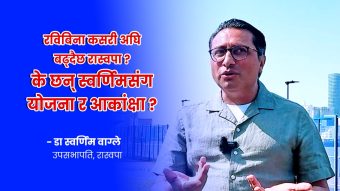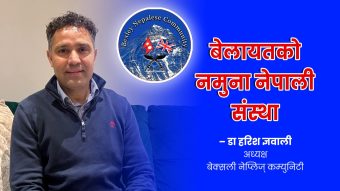Unlocking Dialogue: The Interplay of Communication and Personal History




Swopnil Devkota
Have you ever considered the significant influence our words and expressions have on others? Our spoken language acts as a canvas on which our actions, behavior, and feelings are vividly painted, resulting in a communication tapestry that expresses both the overt and subtle parts of our self. Individuals notice and interpret this delicate interplay between spoken language and nonverbal clues to differing degrees.
It’s interesting to observe that some people have an intuitive ability to comprehend the unsaid gestures and signals that follow our speech, while others are completely unaware of these subtle nuances. The essence of the problem is how these indications are interpreted and processed by the recipient. Do we just disregard communication, or do we make an effort to acknowledge and respect the thoughts of others, so catalyzing a huge divergence in outcomes?
The tremendous influence of our prior experiences is a crucial grounding to this complicated tapestry. The trajectory of our life, shaped by previous encounters and relationships, creates a cognitive framework that has a substantial impact on our current communication habits. The echoes of our childhood, the way our parents talked with us, serve as a model for our current conversational style and emotional responses.
Sigmund Freud, the father of psychoanalysis, advocated the idea that our present selves are inextricably linked to the tapestry of our history. Childhood imprints carve our particular narratives, and it is through this lens that our psychological dispositions and communication tendencies manifest. If used correctly, psychoanalysis procedures have the potential to unearth and alleviate the echoes of past experiences, allowing for a more harmonic and mindful manner of connection.
This intricate dance of communication extends to the subtle choreography of body language. If you have noticed, we tilt our head a little bit when we are being sympathetic or want the other person to feel we are listening. The cherry on the top would be a slight smile and a little nod at times to know someone is genuinely trying to listen to you. Were you given that environment? That will surely determine how you will take this gesture. If someone is constantly fidgeting and looking at the watch, looking other ways, it means they are really not interested in whatever you are saying, so we get the clue when we can stop.
Moreover, the cadence and tonality of one’s voice serve as additional communication tools. From whispers to crescendos, the ebb and flow of vocal dynamics contain delicate shades of meaning, creating the core of our language. Notable are some who invariably adopt a heightened volume, which may be rooted in an unfulfilled need for validation and attention from their earliest years.
Intriguingly, there are those who freely express their opinions, ignoring the nuances of diplomatic communication. These individuals, inspired by an ideal of unfiltered candor, may show behaviors that mimic their own childhood memories of being silenced or constrained. While not a complete explanation, understanding the origins of such behavior prompts us to examine the question “why.”
Some people communicate in an open manner. Their hands move a lot, and they have various expressions on their faces. They are also known to be expressive. This is one of the dominating traits used to demonstrate one’s superiority over others. That is why, rather than scooting sheepishly in the chair, it is preferable to sit freely and communicate with hand motions during interviews. It reveals if you are a dominant person or someone who is being dominated.
However, because these sophisticated communication threads are intertwined within the fabric of human vision, their interpretation is invariably colored by our observational acumen. Misinterpretation is a looming threat, exacerbated by cognitive biases and mistakes in judgement. Indeed, attributing unintended interpretations to gestures or emotions highlights the delicate nature of understanding human interaction, reminding us of the complexity of our cognitive processes.
In conclusion, the symphony of communication reaches a magnificent crescendo in which words, gestures, and intonations unite to transmit the symphony of our inner worlds. Our present relationships are cast in complicated shadows by the tapestry of human experience, which is stitched with threads from our past. As we navigate this mosaic, developing excellent observational abilities and a discriminating spirit allows us to not only comprehend but also appreciate the rich kaleidoscope of human communication.
-Swopnil Devkota (Psychosocial Counselor)
सम्बन्धित सामग्रीहरू
हाम्रो सिफारिस
- १
- २
- ३
- ४
- ५











